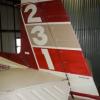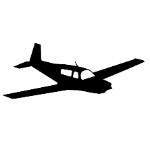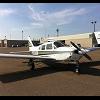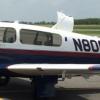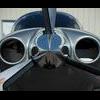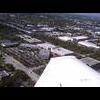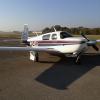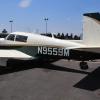Leaderboard
Popular Content
Showing content with the highest reputation on 03/14/2016 in all areas
-
I too was looking forward to the non-commercial category as well but knowing the FAA I didn't keep my hopes up. I had little faith it would happen. In the mean time I still love my Mooney. Going to upgrade the avionics in a couple weeks to Avidyne IFDs and get the L-3 Lynx NGT-9000. Hopefully a new paint just in a couple years too. She's still my baby and I still love flying. I'm never going to let the FAA dictate how I feel about flying. They don't get to win. I do.6 points
-
An update on this. I did get in touch with Don Maxwell and he could not have been more helpful. We got all the parts here and are currently installing the new fuel caps and aileron rods. Hope to be airborne again in about a weeks time. It's great to have people like you guys here at Mooneyspace and real pros like Don around to help when things do get a bit more complex. Thanks to all of you for your help and especcially to Don for organizing and shipping all the necessary items.3 points
-
Austin Tx to Santa Fe NM, then to Durango CO. Brutal headwinds made it feel like I was in a Cessna. Super slow until 200 miles from Santa Fe. Then the turbulence started. Going lower wouldn't work. Going higher was even worse. 160 TAS, turned in to 120 KTS ground speed Yes, the slow ground speeds were worth it!3 points
-
Stall speed in your POH is at gross, and declines by the ratio of the square of your landing weight to the square of gross weight. My plane's listed stall speed with takeoff flaps is 61 mph. So I aim for 1.3 x 61 = 79 mph on short final. I further reduce this target by 5 mph for every 300 lbs below gross for each landing. So I often target 75 mph on short final, and am frequently 70 mph over the numbers. The stall horn should squall with the tires a few inches off the asphalt. I was based my first seven years on a 3000' x 75' field with trees on both ends; this worked well there, it works well at my current 5000' x 100' base, and it has done me well landing at various Class C up to 12,000' x 200' (when they don't make me fly straight in, or follow an airliner on ten mile final). When it's gusty or twitchy, add half the gust factor. So if it's 10G15, add 2-1/2 mph; if it's 15G25, add 5 mph. When the wind is variable, keep your hand ready to adjust the throttle. (It's already on the throttle anyway, right?) Wind from the north in my video above, whistling through a gap in the ridge, would create sink over the trees on final, countered by pushing the throttle a little bit to get through it, then reducing it to continue the descent. I don't recall, nor care, what my stall speed is at 40° bank. In the pattern, if you're so off that you need a 40° bank to salvage the approach, go around. And yes, I've done a go around, at night, with my wife and luggage for a week, when I porpoised on the runway. Two bounces and everything went forward, with me praying to clear the trees. Second landing was uneventful. All the way around the pattern I was chanting, "Make a normal landing. Figure it out later." Figured out later that I was so glad to be home that I quit flying in the flare. When I misjudge the base to final turn and end up wide, I just keep the same gentle bank and fly back towards the runway; if I'm really wide, I just go around and turn final sooner the next time. When a gust picks me up in the flare, I give it a little throttle, level off, pull throttle and land. Just like a did as a student pilot on my second of three landings when I soloed. The Mooney is an airplane, it lands like an airplane, the laws of physics and aerodynamics apply to it the same way, too. Extra speed is what puts Mooneys in the grass off the end of the runway, or speeding through the weeds beside the runway . . .3 points
-
Any time my cowl is off I am looking for potential problems. Chad, my local FBO operator, A&P/IA, operates the same way. We have found issues many times during routine maintenance that could have led to more serious problems later (I'm not talking during annuals either). Steve, my hangar partner with E model will sit on a stool and just scan the engine compartment anytime one of our planes is de-cowled. He's the one that taught me that habit. I'm not real anxious for the FAA to mandate "airline standards" to my Part 91 operations. That could become real expensive leading to a further decline in GA. If someone wants extra equipment for safety on their plane, there is always the 337 route to making it happen.2 points
-
"Oh honey I promise I will put more gas next time" "Darling I hanged your underwear on the chute ropes, wait until it dries" "Thanks honey, nothing like a Cirrus chute"2 points
-
All this mathematics, algorithms, and calculus, is making my head spin. Whatever happened to just flying the airplane? Once I've verified with my ASI that I'm slow enough to get the gear out, I'm done with it. Just look out the window and fly the airplane. It's just a piston single, it's not like I'm trying to land a 747. Of course I'm just landing a C model.2 points
-
I'm not sure if they changed for some years, but mine says 78mph for 40 Deg bank with gear out and flaps at 15deg. That's one reason why I normally fly the entire pattern at 90mph and slow to 80-85 on final... I don't see why this is so controversial. Earlier when I said sometimes I'll fly 100 over the numbers, I failed to mention I'm still nearly at pattern altitude. I wouldn't dare be on short final that fast. i also re-read my post talking about stall speed in high bank.. I didn't mean to say 1.3x high bank stall, which mine is 78 dirty. I guess I should never talk about speed over the numbers because I honestly never look after I'm a couple hundred feet before the threshold. I stabilize my final 80-85 before that point. From there I fly on feel and sense angle of attack and energy... I couldn't tell definitively what my IAS when my wheels touch or in the flare or over the numbers. You can easily feel if it's not ready to flare. Anyway, sorry if my comments raised eyebrows. I guess I just wanted to caution against getting low, slow, in the seasonal conditions, and different terrain.2 points
-
I understand the trepidation in flying a Mooney properly. Airspeed makes you feel safe, and flying the airplane onto the runway with excess airspeed often results in a satisfyingly soft touchdown. Couple that with instructors who really don't know or understand Mooneys, who are afraid of them themselves, and pass those fears along to others and you have people flying faster and faster in the traffic pattern. If a little extra airspeed is good, then even more must be even better. I know. I was one of those myself. We have wind shear and down drafts at my airport. I am not afraid to carry a little extra airspeed on final (about 1/2 the gust factor as a start) because I'm not starting out 15-20 mph too fast.2 points
-
Today's flight was yesterday. With a narrow window in my Saturday schedule, and feeling the need to burn off some 100LL I departed Texas Gulf Coast Regional looking for 8,500 msl to do a couple of mixture sweeps to check the injectors for GAMI spread. I was also testing the new GoPro mount I'd gotten earlier in the week. It was scattered below but 8,500 put me in a wispy thin overcast so I climbed for 10,500 knowing there were clear areas all around. I was already headed down the coast so I decided to make a quick stop somewhere new and Mustang Island sounded like a fun place to check out. The flight down the coast was uneventful though the airfield (KRAS) was a bit difficult to spot heading into the sun, particularly with mix of sand and water below. As I dropped the gear turning downwind I could see that the beaches were crowded with Spring-breakers below. The base leg had me descending over the Intercoastal Waterway. Then the final approach takes you low over the salt-grass marshes with the runway starting right at the edge. (See pics from GoPro time-lapse) I only had about 15 minutes to chat with the mom-and-pop FBO attendants before I had to bug out but they were super nice. Apparently there's a new aviation-themed motel that's recently opened too. Once I've confirmed they're dog friendly I plan to head that way again with the Mrs. and pooch Eli. That's it!2 points
-
I fly an F and this suits me. I fly into runways between 3500 and 9000ft with unforgiving terrain all around. I do not want to come up short, low and slow ... There simply is no reaso to fly so slow and behind the power curve. Have you ever done a go around at 70mph gear out and full flaps? Yes, slow down to 1.2-1.3 for short grass strips, but sooner or later flying that slow in the pattern will bite you when you are hit with a down wind gust and full gross as you turn base. Be safe, there is no reason to fly that slow. 80-85 over the numbers means touching the wheels around 70. (take off flaps). A little slower full flaps. (F model, so take into account for slower flying models) But remember our wings quit flying abruptly. I fear that flying too slow is what got our late Canadian friend and his recovering son. I recall this is what also got the meridian at OSH last year. Guys, there is no reason to fly so slow as long as you don't let your wheels touch at over 75mph. (F). Just my humble opinion on how to keep yourself and pax safe.2 points
-
Nope, no primary non-commercial in there. Yep, right on schedule, this thing's DOA. Time to pack it up boys. I'm just gonna run out my Arrow and then sell it/salvage it/who cares. Then I'm getting on the ExAB bandwagon. Avionics upgrade and a more liberal approach to legally wrenching/modifying my airplane was sounding good, but in light of this blow to the hope of revitalizing the fleet, it's pretty clear these spam cans are going to the scrap yard. At least they released it only 3 years late, so I can finally make an informed decision on the future direction of my avocational flying. For now, steam gauges, fat chance on a paint job expense now, expired IFR database and a tablet is it, and IRAN on the mechanicals. I'm done spending any more money on this boutique priced dead-end crap. The expense just turned gratuitous; it's just not fun anymore. As much as I hate the RV-cult and some of the Jupiter sized tools that make up that demographic, it looks like that's where my future lies. It was a nice thought while it lasted. Primary N-C was indeed too good to be true.2 points
-
Speaking of NO meaningful change.. I have to say I bet the Aeromedical "rewrite" is a worse than before situation. Now, just how many physicians, when asked to sign a form that states a patient is good to go as "pilot in command" are going to think , "Well, hum...maybe I need to call my attorney and then my insurance carrier, this a new one on me." Let's face it, any of you in the professions - architecture, engineering, etc..we all know where this is going. This is no solution at all. Now, instead of a structured FAA medical that protects the process, we have a "hey Dr. Dude, can you sign me off, please?" Our government at work for the tort lawyers, again. And, I believe it was all a last minute rewrite, as usual.2 points
-
1 point
-
Today's flight also didn't happen. It would have been one of those everything lines up just right type of moments for it to go. I bagged a flight from BDR to PHL yesterday with today's crappy forecast ... Specifically the possibility of icing with an inversion layer. Sure enough today there were temps of +4 or so on the ground, +1 at 3k and a DA40 reported mod clear ice at 3.5k over Oxford. Ah ha observation confirmed the forecast. But this warm front was moving through and by the time we would be ready to depart, warm air would predominate and no more icing predictions (btw not impressed with Lockheed Martin). Anyhow now there's this stationary front moving through with a solid line of TS that look just nasty. Based on the speed of the line moving SW to NE it would have been pushing it to try to get in just before the line arrived in the Pittsburgh area. Almost but not quite. Well see how things look for tomorrow. Will definitely be areas of IFR but hopefully no convection.1 point
-
You are right, I apologize. I had been setting in the lobby of the urgent care place down the street with a banged up knee for over three hours, I was in a pissy mood...1 point
-
I'm with Yooper. Anytime I have the cowl off I inspect it for chaffs and deposits. I then clean both the upper and lower sections before reinstalling it so that I can inspect the next time.1 point
-
Jeff: I was testing the strength of the mount, plus having a little fun. As I previously mentioned, I never fly like that normally. Ground clearance with the camera is 10". Not much. Hence the 3-point landing. Normally I land on the mains first, just like everyone else, but I was afraid I'd clobber the camera so I held it off in a level attitude until she settled to the runway, kind of like a wheel landing in a taildragger.1 point
-
I have likened piloting to golf. I don't play golf. Everyone is trying for that great landing, just like they are trying for that great put or great tee shot. Then everyone sits around the clubhouse and comments on the landings of the day and talks about other people's game. Carry on!1 point
-
It's possible all is not bad. What is written in the 23 rewrite looks as if they are saying here you go congress - we rewrote everything in a manner where we won't need to actually change anything - that is the likely outcome. On the other hand, the words they are using say that they want to allow us to install more equipment and not block us. Ok, if that is true, then it comes down to interpretation. Will they interpret their old - or new - document in a manner that allows say a Dynon to make the paperwork necessary to install in a certified 4 seat piston. An amsafe to inexpensively extend their STC to us, and so forth. To allow reasonable and easy access to field approvals again - something they used to do but by practice instead of by regulation, essentially closed off as an opportunity entirely. Will the practice become more reasonable? Likely no, but perhaps yes.1 point
-
I can't imagine making such steep banks so close to the ground. Yeah, if that's what it takes to salvage the approach its time for a new one. I was taught to make a stable approach, and that advice has always served me well. Like I said, if you can't put it down routinely within 1500 feet you're good to go no matter how you do it. I can't imagine doing that coming in an 85 mph over the numbers, but most of you are better pilots than me and probably have it figured out with some dark magic or something. Thing is, if you come into a 5k foot strip and land in thousands of feet every time, the once you're going to have to come in shorter (shorter runway, emergency, whatever) it will be an unusual landing. Maybe you can do it, maybe not. If you put it in short every time the one time you're really going to need it you'll be doing the usual. I've been told that in an emergency most pilots overshoot. Gee, I wonder why?1 point
-
Its turned into quite a good time, if you are around next year you should consider driving up (we accept P-Cars of all types).1 point
-
My point was not in an FAA mandate, just disdain for their hinderance to allowing reasonable modification, where deemed appropriate. Perhaps my RV-4 ownership has clouded my vision...but I think not. Patrick1 point
-
We purchased our Eagle with just over 1000 hours. At the first annual at Premier we did inspect the gear back assembly and there were noticeable metal shavings in there. They called us, we went down and looked at the shavings and replaced the parts needed. I believe it was a time limit part at that time, but even if it's not you should get in there and look at it. With ours, failure was inevitable at some time and it's not a part you want to malfunction if needed. Sometimes I am amazed at the CB attitude some on this board are so proud of. This is an expensive hobby, your lives as well as your families (as well as innocents on the ground) are at risk. Please be careful out there. I am a Mike Bush student and believe if it's not broke don't touch it, but look at it and make sure, if it's broken or wearing out .......1 point
-
I second Mike's recommendation Sunset Eagle Aviation. Mitchell drove over to Pensacola during Summit III, did an oil & filter change, checked a cylinder compression and changed a couple of plugs for me, all on site. Very reasonable charges (no travel time!) and very honest. Wish I was based in the area so I could use them.1 point
-
I posed about the PFM a while back on Pelican (same user name as here) just out of curiosity (when I started flying), the PFM is what turned me to look at Mooneys in the first place. I see your based in the the north east, you may have seen some of the P-Car gatherings i set up around the area. I have had my 78 SC for about 8 years now as well as some of the water breathers in the mix. Regards Dave1 point
-
1 point
-
1 point
-
Another issue that may affect your fuel flow at take off. Is your electrical fuel pump on? In my case it makes a big difference. 16 gph without electrical fuel pump 17.3 with fuel pump on.1 point
-
Peter- It was great to finally meet you as well - very good looking aircraft. We had a very successful breakfast fly-in at MQS. The lineman at the FBO noted, "The Mooney's were out in full force today." We had 14 attendees and 9 aircraft. Watching the P-51 takeoff and the T-6 pattern work was an obvious bonus. Next month will most likely be GED for breakfast on a Sunday. I'll post once the date is finalized. I know there's a Yak and a B-25 based at that field, maybe we'll get to see one. As always, I enjoyed the company of fellow pilots and aircraft owners. Thanks for coming out. -Seth1 point
-
Right on that, aluminum that chafes against fiberglass will get sawn up in a hurry.1 point
-
1 point
-
Me neither! That's why I settled on Bob Kromer's advice and use 5 mph per 300 lbs below gross. Me and full fuel, with typical junk, is just above 2100 lbs, almost 500 below gross of 2575. Half gas will easily put me 600 below gross. That's another 10 mph for me to slow down. Add my wife and almost full fuel, no baggage, I only slow down 5 mph. Its not so hard to do, counting hundreds on my fingers. Just like counting thousands of feet from cruise to pattern, then doubling to get descent time at 500 fpm, and adding a couple to allow for deceleration. Easy! Finger math is the best . . .1 point
-
I agree completely. There are times when wind shear conditions at my airport mean that I can't fly, while the same conditions 10 miles away at the closest commercial airport would not keep me on the ground. All about context and safety and understanding the airplane's limitations (as well as my own).1 point
-
Going into 2000, let alone grass, I'm with you. I'd be full flap, 70mph or so. I'm not afraid of my plane, but I do respect what can happen if things or condition don't go to plan. All I'm trying to say is that I hope folks fly according to context. If you're landing on 2000ft, go slow. If you're on a 2mile controlled field, going that slow when there is no reason to at 5 o'clock when commercial jets are lined up and everyone is waiting on you to land is not good for GA.1 point
-
Sometimes I fly 100mph over the numbers because I need to land 1.5 miles down the runway so I don't have to taxi for 10 minutes. Whatever i hope we don't read about you augering you and your pax in one day on base or coming up short when your only motor cuts out. Contrary to what some on this site preach, flying a mooney is not an exact science... I'm only trying to suggest folks don't fly too slow until short final. As far as I know, flying 10-15mph faster in the pattern won't kill anyone. Think about it There is plenty of time to slow down before you're on the ground I recommend folks pull out your books and find your gross stall speed at 40 degree bank angle, it will surprise you. You should be 1.3x that until final, minimum in my opinion. Your airspeed indicator also is probably off 2-3mph +/-, as called out in the POH. And add wind gust difference to that. One time, halfway down final, I encountered 20mph windsheer. If I had been flying like some of you suggest, it could have been a bad day. Just the other day, on a turbulent downwind, I lost 15mph instantly just before turning base. Stay safe, you don't need the stall horn blaring and remember you need energy to arrest your descent before flare. If the stall horn is on, you better put your ass on the ground before you land 3 feet in the air or worse. My uncles old parter put the mains through the wing of their C401 when he had the stall horn on just before touchdown and a gust cause him to balloon 10 feet because of his high angle of attack, then came back down hard, instead of going around .. In my opinion, if youre listening more to your ASI than all the other things the plane and conditions are telling you, sooner or later that ASI will get someone killed. MHO1 point
-
As a former owner of a 231 converted midlife to a 262 (equivalent of a 12 volt 252) some thoughts. Ironically the new digital instruments and LED lighting have reduced the electrical loads to the point where 12 volts is not the disadvantage it used to be. I think the soft market for Rockets reflects some of the operating issues including fuel consumption, weight etc including maintenance costs Mod Works and I believe another Mooney shop did conversions of the 231s, to the equivalent of 252's and should not be overlooked. most of the conversion was simply replacing everything forward of the firewall with a TCM 360MB motor and Mooney engine mounts, cowling, induction plumbing etc. The Mod Works conversions come with a manual cowl flap that is adjusted using something similar to a prop control..... the result is substantially better than the Mooney electrical control for several reasons. a) maintenance cost ,b tactile feedback as to position, c fine settings and most importantly reliability - The mooney electrical system uses spade connectors on three critical connections 2 on the master switch and 1 where the wire from the master switch attaches to the skin. The failure ( slip or just oxidation) of any one can cause instant electrical failure of everything in the airplane other than the overhead lights. Worst case is IFR approach with gear , half flaps and cowl flaps closed . If you have the electrical cowl flaps they stay closed. Some years ago I raced a Rocket from Bishop to Santa Monica.. Rocket arrived about 5 minutes earlier but lost 2.5 minutes in additional refueling time.1 point
-
I have given thought to a #2 solution. But is only feasible on the back seats with with retractable doors on the belly (bomber bay doors). But if you hate bird droppings on the windshield you would not like Mooney droppings, they can be a foot long.1 point
-
My M20J may not have a parachute but it has a relief tube that I use more often than a parachute. An when the emergency comes I will have dry pants vs those in the Cirrus with wet pants. José1 point
-
I'd love to, but I honestly don't know much about what it entails. I have no doubt that the work would come fairly easy to me since I've spent most of my life working on other vehicles, but I know it is something that takes a fair amount of time. Maybe if I end up getting a job flying that has some time off.1 point
-
We each have our preferences based on soft field, short field, obstructions or whatever, so this isn't a criticism of the video, merely a different perspective. If I were coming into that field, those trees look far too solid (to me) to depend on a quick shot of throttle. There's no place to bail to if there was an engine burp. I'd be coming in at a much steeper angle throttled right back with no need to add power to get to the threshold. And probably do a quick slip to scrub extra speed and altitude if needed.1 point
-
There is plenty of concern about stall spin on the base final turn as for me I prefer to carry more speed through this turn 90mph and never seem to have trouble getting my speed to be under 80 as I cross the threshold. I am sure it will draw some criticism but I don't land on the stall horn I just hold it off and it slides right onto the mains. When I was working on getting to the stall I made my worst landings.1 point
-
1 point
-
Some wives appreciate it when it's done. They don't like broken and raggy parts at 9,000 ft... Raggy trim at the door where everyone enters is a highly undesirable memory that last for decades.... combine raggy interior with an odd sounding valve on start-up, your family (Dad) will remind you of it for years to come. Even after you own a shiny new to you long body..... New rug is easy at annual time. Sidewalls were an immediate improvement. New and snazzy door welting is nice because the old one can be really raggy and highly visible as everyone enters the plane. Plastic panels are more skill intense. I started with the new door panels and trimmed and trimmed and then sold the panels with the plane. I still wish MS was available back then.... Best regards, -a-1 point
-
A good Pre-purchase inspection will answer your questions with an amazing amount of work detail. It will also point out any flaws you may want to know about prior to buying. 1) Nose gear does wear every fifty years or so. LASAR has refurbed parts and pricing on their site. Your local mechanic can install it with the proper MM. Change ou the rubber discs while you are in there. A few AMU being spent. 2) there are a few suppliers for resealing tanks and adding bladders. Roughly $10k 3) new nice paint Roughly $10k 4) engine OH roughly $10K 5) New WAAS GTN roughly $10K 6) New Mooney roughly $500k The search function at the top will reveal a lot of detail of people doing similar things like you. Sometimes options and local suppliers you haven't thought of will become visible. Finding a 'cheap' plane and sinking chunks of 10amu in it may not be as cost effective as buying one that is more turn key. Keep in mind, I started with a cheap C in y2k... Best regards, -a-1 point
-
Leather to beverage ratio was addressed. Took about 8 hrs of tedious work and I'm not quite done. Many Netflix episodes of various things were on in the background. Stretching the leather was like trying to get spandex on an elephant. Pretty happy with the result. Had to put the yoke back on for a flight. Going to finish with a to panel to keep the suture lines along the corners instead of the middle of the yoke. Then put the caps back on. That's why there's extra material at the top of the horns. Finally I'm going to have the same Classic Mooney bird embroidered in leather for the front plate. Fun stuff.1 point
-
Mine reaches critical altitude at about FL210 with a fixed wast gate that isn't closed all the way. It has the same turbo and the same engine. The only difference is the inter cooler. I didn't think it made that much difference, but apperently it does.1 point
-
My personal experience is that when I am going through a period of bad landings (I'd like to think that we all do from time to time), is rather than just practicing landings is to climb to a safe altitude and practice slow-flight for a while. Put the plane in landing configuration and do turns and the rest of the slow-flight regime. It will restore your feel for the airplane. Don't forget to do clearing turns.1 point





